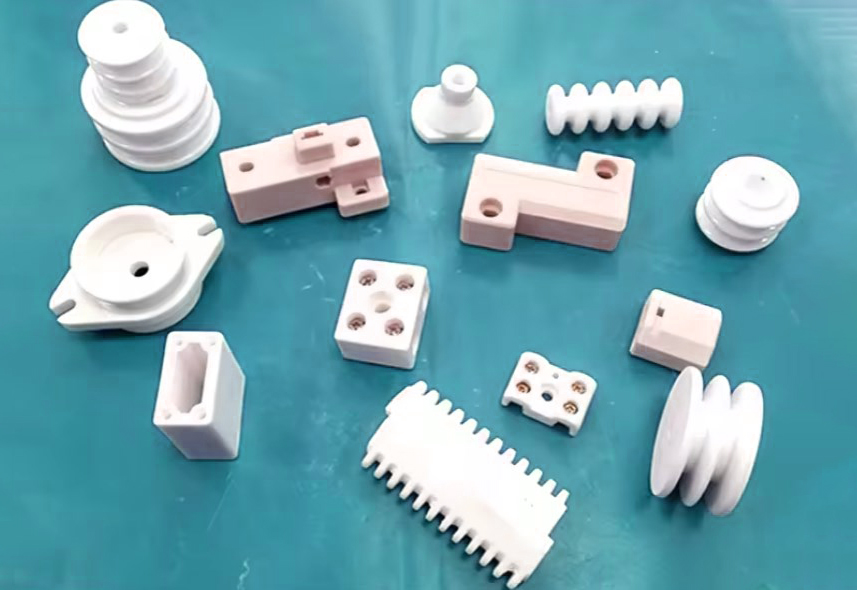Temperature Tolerance of Various Advanced Ceramic Materials: Paving the Way for High-Performance Applications
In the realm of materials science, the quest for materials that can withstand extreme temperatures without compromising their structural integrity or performance has led to significant advancements in advanced ceramics. These materials, known for their exceptional thermal, mechanical, and chemical properties, are pivotal in industries ranging from aerospace to energy production, where high-temperature environments are commonplace. This article explores the temperature tolerance of various advanced ceramic materials, shedding light on their applications and the future of high-temperature technologies.
Silicon Carbide (SiC)
Silicon Carbide stands out for its exceptional thermal conductivity and stability, with a temperature tolerance that can exceed 2,500°C in non-oxidizing environments. Its remarkable resistance to thermal shock and wear makes SiC an ideal material for components in jet engines, gas turbines, and even as protective shields in space exploration vehicles. The material's ability to maintain its strength at high temperatures also makes it suitable for use in high-performance brakes and clutches in automotive applications.
Zirconia (ZrO2)
Zirconia is renowned for its high-temperature tolerance, withstanding temperatures up to 2,200°C. Its thermal insulation properties are leveraged in thermal barrier coatings on turbine blades, significantly increasing the efficiency of jet engines by allowing higher operating temperatures. Additionally, zirconia's expansion properties upon heating make it an excellent candidate for thermal insulation applications and high-temperature furnace linings.
Alumina (Al2O3)
Alumina possesses a high melting point of approximately 2,050°C, making it suitable for a wide range of high-temperature applications. Its use in the fabrication of crucibles and refractory linings is well-documented, owing to its excellent thermal stability and resistance to corrosion and wear. Alumina is also employed in the electronics industry, serving as substrates and insulators in integrated circuit packages where high-temperature resistance is crucial.
Silicon Nitride (Si3N4)
Silicon Nitride exhibits remarkable thermal and mechanical properties, with a temperature tolerance of up to 1,200°C in oxidizing environments and higher in non-oxidizing conditions. Its resistance to thermal shock makes it ideal for high-temperature engineering applications, including bearings, turbine blades, and metal cutting tools. Si3N4's unique combination of strength, toughness, and thermal stability also finds applications in the automotive industry, particularly in engine parts.
Boron Nitride (BN)
Boron Nitride is distinguished by its excellent thermal conductivity and chemical stability, with a high temperature tolerance that allows it to function in environments up to 3,000°C in inert atmospheres. Its hexagonal form is used as a lubricant and thermal insulator in aerospace applications, while the cubic form of BN, similar to diamonds in hardness, finds use in cutting tools and abrasives for high-temperature processing.
Mullite (3Al2O3·2SiO2)
Mullite is an alumina-silicate ceramic with good thermal shock resistance and stability up to 1,800°C. Its application in refractory materials, kiln furniture, and thermal barrier coatings is driven by its low thermal conductivity and resistance to deformation under load. Mullite's versatility extends to the glass and ceramics industries, where it is used in furnace linings and to protect against aggressive slags and molten metals.
Here's a comparative table summarizing the key properties and applications of the advanced ceramic materials discussed, focusing on their temperature tolerance and notable uses:
| Material | Temperature Tolerance (°C) | Key Properties | Notable Applications |
|---|---|---|---|
| Silicon Carbide (SiC) | >2,500 (non-oxidizing) | Exceptional thermal conductivity, thermal shock resistance | Jet engines, gas turbines, space exploration shields, high-performance automotive brakes |
| Zirconia (ZrO2) | Up to 2,200 | High thermal insulation, resistance to wear | Thermal barrier coatings on turbine blades, furnace linings |
| Alumina (Al2O3) | Approximately 2,050 | Excellent thermal stability, corrosion resistance | Crucibles, refractory linings, electronic substrates and insulators |
| Silicon Nitride (Si3N4) | Up to 1,200 (oxidizing), higher in non-oxidizing | High strength, toughness, thermal shock resistance | Bearings, turbine blades, metal cutting tools, engine parts |
| Boron Nitride (BN) | Up to 3,000 (inert atmospheres) | Excellent thermal conductivity, chemical stability | Aerospace lubricant and insulator, cutting tools, abrasives |
| Mullite (3Al2O3·2SiO2) | Up to 1,800 | Good thermal shock resistance, low thermal conductivity | Refractory materials, kiln furniture, thermal barrier coatings, furnace linings |
Future Directions and Challenges
As industries continue to push the boundaries of technology, requiring materials that can withstand increasingly harsh conditions, the development of advanced ceramics with higher temperature tolerances remains a critical area of research. Challenges such as improving the toughness and reliability of these materials at elevated temperatures, as well as developing cost-effective manufacturing processes, are at the forefront of materials science.
Innovation in the field is also focusing on composite materials that combine the desirable properties of different ceramics, potentially leading to breakthroughs in temperature tolerance and mechanical strength. These advancements promise to unlock new applications and efficiencies in high-temperature technologies, from energy generation to space exploration.
The exploration of advanced ceramic materials and their temperature tolerance is not just a testament to human ingenuity but a crucial step towards a future where materials no longer limit technological progress. As research continues to advance, the potential for these materials to transform industries and improve global sustainability becomes increasingly apparent, marking an exciting frontier in materials science.
Read more: Analyzing Cost, Temperature Tolerance, and Compatibility Across Various Ceramic Materials

Comments
Post a Comment